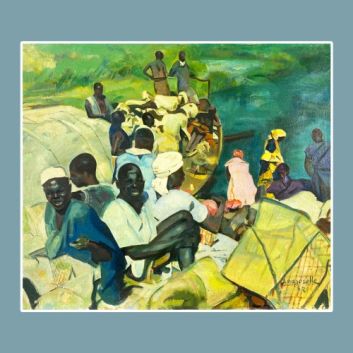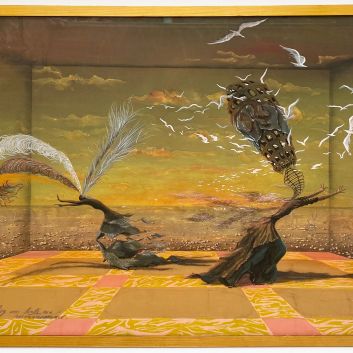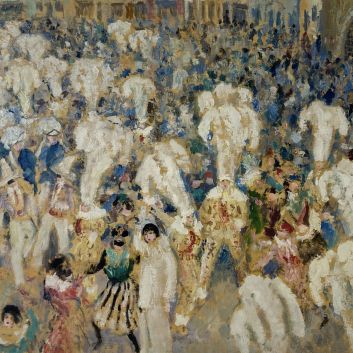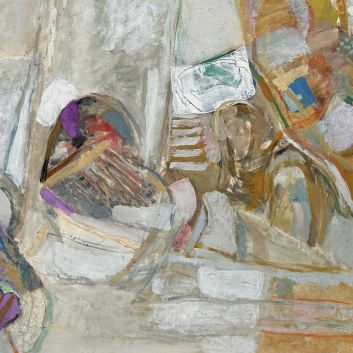Rating and value of works, drawings, paintings by Chaïm Soutine
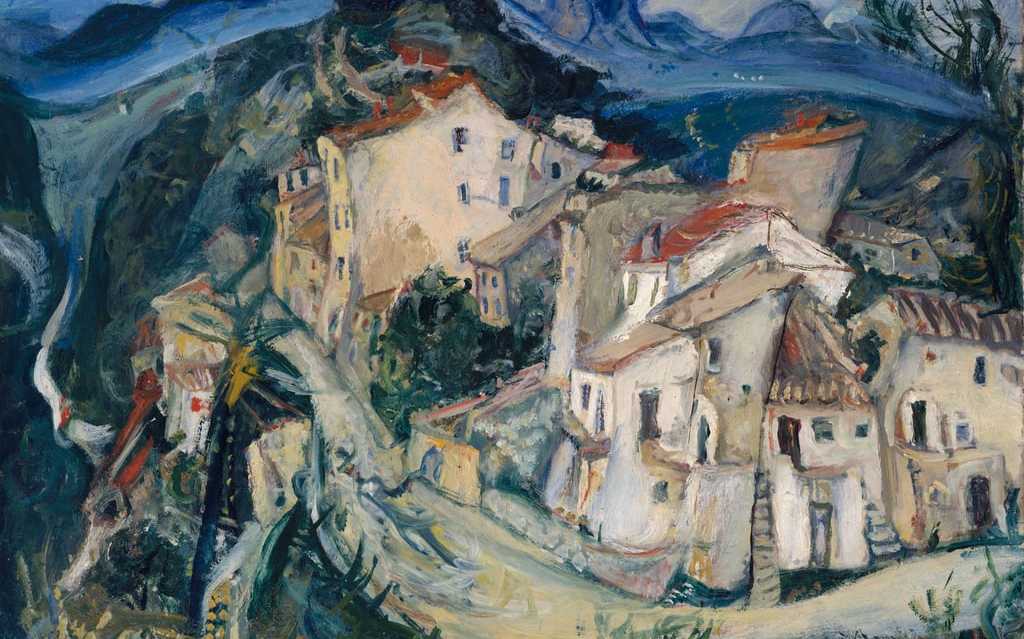
If you own a work by or based on the artist Chaïm Soutine and would like to know its value, our state-approved experts and auctioneers can help you.
Our specialists will carry out a free appraisal of your work, and provide you with a precise estimate of its current market value.
Then, if you want to sell your work, we'll point you in the right direction to get the best possible price for it.
Artist's rating and value
Chaïm Soutine's work is commonplace and highly rated on the auction market. His works arouse interest among collectors and art lovers, particularly those who appreciate twentieth-century painting. The most sought-after pieces are Expressionist paintings.
Thus, a work by Soutine can fetch millions of euros at auction, as demonstrated by his painting Le valet de chambre, dating from 1927, which sold for €13,330,000 in 2015, whereas it was estimated at between €9,120,000 and €11,927,000.
Order of value from the most basic to the most prestigious
Technique used | Results |
|---|---|
Print - multiple | From €40 to €250 |
Drawing - watercolor | From €6,000 to €30,000 |
Oil on canvas | From €100 to €22,325,000 |
Response in less than 24h
Chaïm Soutine's colorimetry
Colorimetry plays a central role in Chaïm Soutine's work, where every nuance is used with palpable emotional intensity. Of Russian origin, Soutine was born in Smilovitchi in 1893, and his artistic journey led him to Paris in 1912, at the heart of a creative effervescence that would mark his practice.
In this ferment, he develops a unique sensitivity to color, integrating bold palettes to enrich his compositions.
His work began with still lifes and landscapes, genres in which he experimented significantly with color. At the Académie de la Grande Chaumière, Soutine rubbed shoulders with other avant-garde artists, exchanging ideas and techniques that nourished his approach.
He doesn't just observe; he immerses himself in the raw emotion that color can convey. The saturated colors he chooses seem to vibrate on the canvas, revealing tormented inner landscapes and a personal vision of the world.
His technique is often characterized by rapid, expressive brushstrokes, creating a texture that intensifies the effect of color. Deep reds, bright blues and saturated greens intermingle to create vibrant compositions full of life and dynamism.
The emblematic work Bœuf écorché (Flayed Ox) illustrates this bold use of color. In this piece, Soutine updates the artistic references of the past, injecting his own vision and a chromatic intensity that expresses itself with force.
Impressionist and Fauvist influences are no strangers to him, but he adapts them to his own sensibility. Each painting becomes a visual cry, an exploration of the emotions that run through him. The colors are not merely descriptive; they translate his internal struggle, passion and anger.
The way he juxtaposes hues creates a palpable tension, revealing an inner world in turmoil.
Soutine's tumultuous life is reflected in his color choices. His sojourns on the Côte d'Azur and in other regions of France nourished his inspiration, enabling him to incorporate elements of nature into his works.
Each trip became an opportunity to discover new colors and new horizons, enriching his palette. Despite personal difficulties, his passion for painting remains unwavering.
Recognition, albeit belated, brought him a certain stability, but he continued to paint with an urgency that transcended the expectations of the art market. His bold, emotional chromatic choices leave an indelible mark on the history of art.
Chaïm Soutine died in Paris in 1953, but his color legacy lives on, captivating art lovers the world over. His work, marked by emotional power and an exceptional mastery of color, continues to arouse deep feelings, affirming his status as the undisputed master of Expressionism.
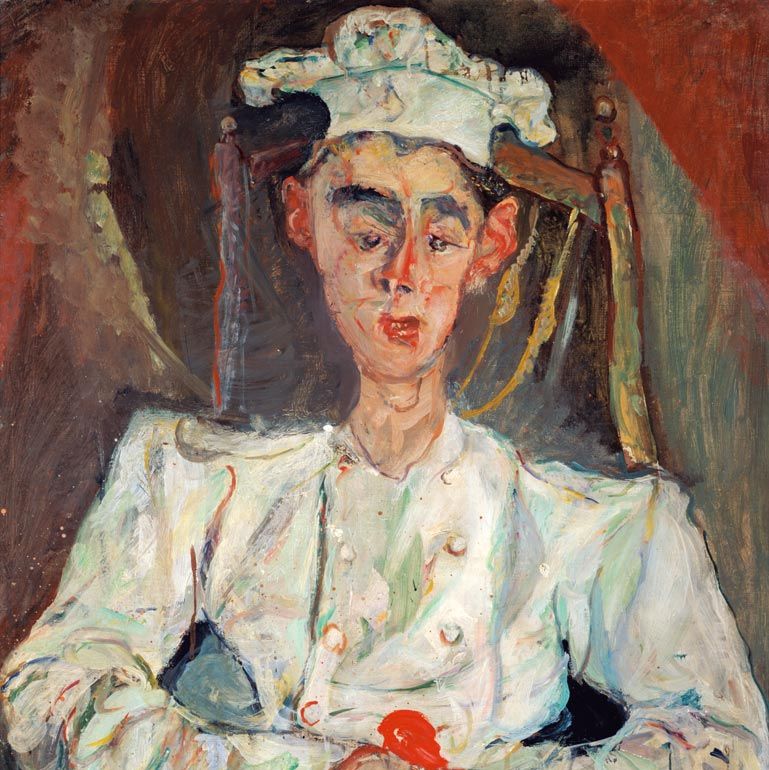
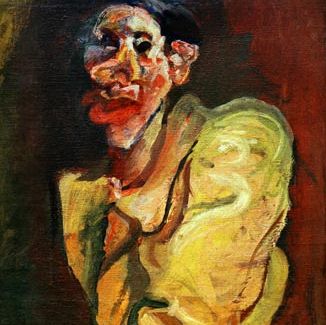
Soutine, one of the most influential artists of the École de Paris
Russian-born Chaïm Soutine was born in Smilovitchi in 1893.
He showed a passionate temperament from an early age, and his difficult childhood in the Russian ghettos led him to develop a precocious artistic sensibility. He reached Paris in 1912, a decisive turning point in his life.
The Montparnasse district, in full artistic effervescence, became his playground. He rubbed shoulders with iconic figures such as Chagall and Modigliani, but didn't achieve success until the 1920s, when collector Albert Barnes discovered his work.
Soutine began by drawing landscapes and still lifes, a genre that was to play a major role in his work. On his arrival in Paris, he enrolled at the Académie de la Grande Chaumière, where he trained alongside avant-garde artists.
His years in Montparnasse were marked by moments of intense creativity, but also by episodes of loneliness and anger.
His style, deeply rooted in Expressionism, reflects an instinctive, emotional approach. He does not ignore the influences that surround him, and knows how to combine his art with the lessons of the masters of the past.
The power of his work is illustrated by iconic paintings such as his famous Flayed Ox, in which he updates references to the past while injecting his own personal vision.
Soutine led a tumultuous life, divided between cafés and creative work. He was often in conflict with his friends and had internal struggles.
His addiction to alcohol becomes correlated with his work, and many believe it fuels his creativity, although it also compromises his well-being.
He traveled throughout France, discovering landscapes that fed his imagination. These sojourns, particularly on the Côte d'Azur, fueled his inspiration and enriched his work. The saturated colors and blurred contours of his compositions become his imprint, revealing an inner world in turmoil.
Recognition came gradually, thanks to the support of friends and collectors, but Soutine often remained dissatisfied with his life. He faced financial obstacles, moved constantly and lived with uncertainty. Yet he continued to paint with passion, refusing to bow to the expectations of the art market.
He died in Paris in 1953, leaving behind a powerful artistic legacy. Today, Chaïm Soutine is recognized as one of the masters of Expressionism, and his work continues to fascinate and move art lovers the world over.
The Soutine - Gegen den Strom exhibition
The theoretical legacy of Chaïm Soutine
Chaïm Soutine's theoretical legacy is indelibly inscribed in the history of art, notably through his contribution to Expressionism.
Of Russian origin, Soutine was born in Smilovitchi in 1893, and his trajectory led him to Paris in 1912, a pivotal moment that marked the beginning of a profound artistic exploration. In the heart of the Montparnasse district, in the midst of a creative effervescence, he rubbed shoulders with avant-garde artists who influenced his work and shaped his vision.
His innovative approach is based on the idea that art is a means of expressing human emotions. Soutine doesn't simply imitate reality; he transcends it.
Her works are an emotional response to the world around her, a visual cry that translates her inner struggles and passion. Colorimetry is essential: each chosen hue reflects her emotions.
Within this dynamic, Soutine developed a singular style, characterized by rapid, expressive brushstrokes that create a lively texture on canvas. He drew inspiration from his personal experiences and the landscapes he discovered in France.
From still lifes to portraits, each genre becomes a field of experimentation in which he explores the relationship between color and emotion. Through his emblematic work Bœuf écorché, he updates artistic references while injecting a chromatic intensity all his own.
The theoretical scope of his work extends far beyond his own production. His reflections on art as a means of expressing states of mind and deep feelings continue to influence many contemporary artists. Soutine thus anticipated future trends, in which subjectivity and emotion took precedence over realism.
His technique and approach to color became references for subsequent generations, including Francis Bacon and Jean Dubuffetwho drew on this quest for personal expression.
Despite his personal struggles, Soutine maintained a passion for painting, which became his refuge. His life, marked by incessant travel and financial difficulties, did not prevent him from creating. He died in Paris in 1953, but left behind a powerful theoretical legacy.
Chaïm Soutine is recognized today as an undisputed master of Expressionism, and his work continues to arouse deep emotions and fascinate art lovers the world over.
His signature
Not all works by Chaïm Soutine are signed. It is also possible that a copy has been made or that the inscription has faded over time, which is why expert appraisal is essential.
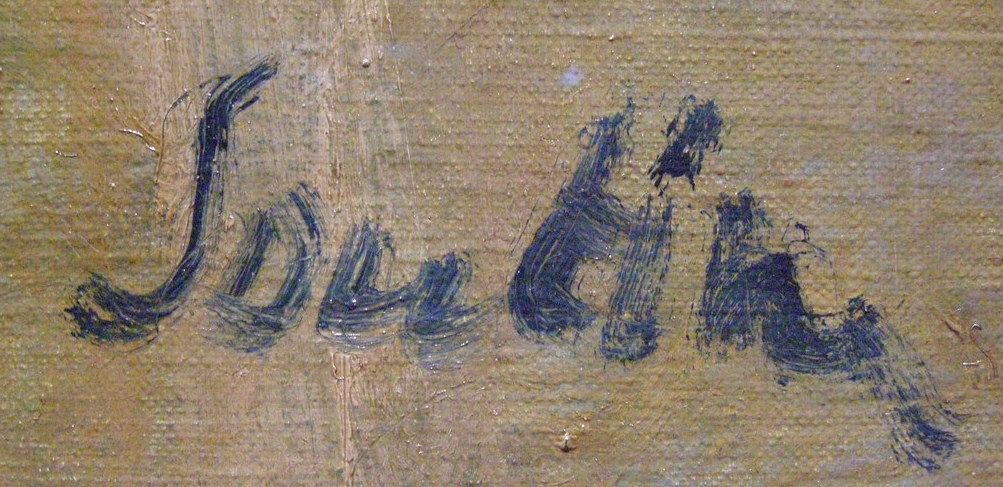
Appraising your property
If you own a work by Chaïm Soutine, don't hesitate to request a free appraisal by filling in our online form. A member of our team of experts and certified auctioneers will contact you to provide an estimate of the market value of your work.
If you are considering selling your work, our specialists will also guide you through the various alternatives available to obtain the best possible price, taking into account market trends and the specific features of each work.
Response in less than 24h
Related topics

2024 quotation and value of Jacques Bin's lighting fixtures, wall...
Jacques Biny is a French designer and publisher who has produced works that are highly rated and valued at auction. Estimate in 24h.
Read more >
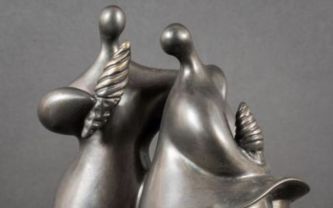
2024 quotation and value of sculptures, drawings and paintings by Je...
Jean Louis Toutain is a contemporary sculptor who has produced works that are highly rated and valued at auction. Estimate in 24h.
Read more >
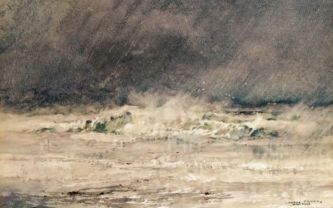
Rating and value of paintings by Ernest Pi...
Ernest Pierre Guérin is a twentieth-century Pre-Raphaelite painter whose works are highly regarded and valued at auction.
Read more >
Secure site, anonymity preserved
State-approved auctioneer and expert
Free, certified estimates
